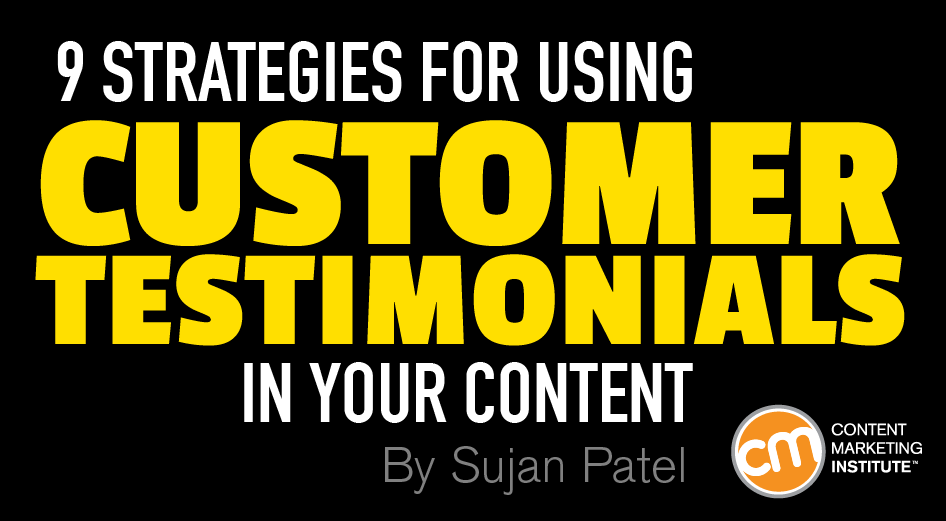- 5 Tips For Getting (and Using) Great Customer Testimonials Telephone Number
- 5 Tips For Getting (and Using) Great Customer Testimonials Complaints
So you want your website to make you look big. More power to you.

But the business experts I talked to recently say small is cool with customers, too. Small businesses, they say, have a personality, flavor and sensibility that big businesses can't match. And when it comes to what you put on your website, they urge: Don't be afraid to tout your smallness.
'Small businesses can have more fun with their sites, more so than large corporations,' says Alice Bredin, president of Bredin Business Information, a Cambridge, Massachusetts, company that helps large business-to-business companies market themselves to small businesses. 'A small-business site needs to include something that reflects the creativity and personality of its owner.'
Maybe you're a couple working side-by-side in a spare bedroom or a fourth-generation entrepreneur working to someday hand it over to a son or daughter. Maybe you're putting yourself through grad school. Or you operate from a remote site in the hinterlands and you use only recycled materials. Presented well on a home page and/or an 'About Us' section, all of these may have unique selling points to customers.
“First, ask the customer to rate your business privately. If the customer would give you a 5-star rating, then encourage him/her to write a review. But if the customer gives you a bad rating, ask what you could do better, fix any problems you discover, and go the extra mile to make the customer happy. Then encourage a review.”.
'People want character; it has meaning,' adds Kelly Cutler, chief executive of Marcel Media, a Chicago-based Web advisory firm. 'How folksy you get depends on your industry.' An attorney may not want to project an image of him or her working on a leather sofa with a dog curled up nearby. But that may work well for an artist or craftsperson, even an architect, Cutler and others say.
#5 - Include reviews in your client's content plan to get the right mix. It’s important to get the right balance in your client’s social media calendar. Too many customer reviews will make your content look over-indulgent and could drive potential customers away. A good testimonial has the power to convince even your 'tough sell' visitors that your product or service really made a difference in your customer's life-and can help them, too. If you’d like to learn more about how to create customer personas, see customer persona examples, and how to use them to enhance your entire customer journey, check out these resources: Customer persona templates. 20 Questions to Ask When Creating Buyer Personas Free Template The Persona Templates Used by Over 130,000 Businesses.
Whatever your industry, 'Tell your story online,' Cutler says. Customers want to know who you are and, if you lead a team, who is on it and what they do. 'You must talk about the team,' Bredin seconds. 'When there is nothing [on your site] about who you are or who's on your team, people wonder about whether you are a good company to buy from.'
Here are the 10 most important things these experts say customers want to know:
- How your business is unique
Answer the question 'Who are you?' as interestingly and compellingly (and honestly) as possible. This includes writing management bios that mention your expertise, years of experience and any unique attributes or details that may set you apart from others.
You need to answer, Bredin says, 'What is unique about your business? Why should I buy from you?' This is missing from many business sites because the owners haven't done the strategic thinking necessary to figure that out, she says.
Be concise, too, Cutler adds. 'You don't need to write a novel.' - A clear sense of what your company offers
'It's incredible how many sites you visit and you're not sure what the company offers,' Bredin says. Make it a priority on your home page to provide at least general information about your products and/or services, with links to specifics on a Products page.
Many service-oriented companies, Cutler says, are concerned about divulging too much information about their offerings, for competitive reasons. Some also feel that consumers will have no reason to contact them by phone if they get all they need from the website. 'There's a balance that needs to be reached' in giving the potential customer enough info to make a buying decision, she says. More often than not, consumers will not contact a company for the missing product information--they'll just move on to a competitor. - Contact information, including a phone number and physical location
This may seem like a no-brainer, but many companies are purposely vague about their location. Some prefer to do all of their business online and see no need to publish an address or phone number. Others are home-based or they worry that giving a street address or hometown will somehow hinder them.
'This is a must, and it's one small way of building credibility and trust' with the consumer, says Wayne Porter, co-founder of ReveNews, an online marketing publication, and former senior director of research at FaceTime, a business security solutions provider. 'A phone number, a street address and even pictures go a long way toward building credibility.'
Showing a physical location, even one that no one will ever visit, comforts a customer that your business is real and legitimate, Bredin says. Provide a phone number that maps to that location, rather than just an 800 number, she advises. - Third-party validation
This means customer testimonials, client lists, case studies, awards and recognition you've received, positive news clippings and the like. Potential customers indeed want to know who you do business with, and what current customers have to say about their experiences. Such items 'forge the underpinnings of trust,' Porter says.
Client lists are especially important if your customers are businesses. 'If you've got some big-name customers, people like to see that,' Cutler says. But make sure you get approval from those you list as clients, she adds.
Porter adds that having a presence on social networking sites and blogs, especially those serving your industry, is an increasingly popular form of validation among customers. 'Social networking now has strong validation,' he says. - Secure Socket Layer (SSL)
SSL is an encryption system that helps protect the privacy of data exchanged between a customer and a website. If you have an e-commerce site that takes credit card information, customers want to know that their sensitive data is encrypted. Get SSL if you don't have it. If you do, let customers know that and about any other safeguards you proactively take. - Ease of use and navigation
If people can't find it, they can't buy it. Porter advises keeping sites 'crisp, clean, and easy to navigate,' but also for site owners to study traffic and usage patterns to adjust their sites based on what visitors are coming for. 'The ability to search a site is very important,' he says. 'Businesses should study their search data to see if there are trends and what to make front and center.' - Clear guidance on your processes
Let customers know, step-by-step, important things such as how to order--and where to go and what to do should something happen out of the ordinary. Customers also want to know your shipping costs and procedures and how they can get status reports. (Don't list your shipping costs and procedures after people enter their credit card information, Cutler urges.) Last but not least, customers want to know how you handle complaints and problems, return procedures and whether you have a money-back guarantee.
Your processes can be described in a FAQ (frequently asked questions) page or separate 'how to order,' shipping and/or confirmation pages. Include a way customers can contact your business or fulfillment agency for more information. - An ability to give feedback
Encourage feedback about your products and services, your ordering process and your site in general, by providing a feedback mechanism--either feedback forms or e-mail links. Not every small business prefers to offer this, in some cases because of resource constraints. 'You definitely want to look at how and what feedback to gather, and you should consider offering an incentive or perk [to the customer],' Porter says. 'You might get some good stories to feature on your site or in your blog.' - Clear calls to action
Customers want signs or buttons in order to act, be it 'Buy now' or 'Sign up for our newsletter' or 'Click here for more information.' But many small-business sites don't provide calls to action or they don't present them clearly enough, Cutler says. 'This is one of the biggest things that nags me,' she says. 'If you have a captive audience, this is the time to grab them!' - Special offers and personalization
By personalizing a sale with a special offer, incentive or coupon, small businesses can gain an edge on their bigger counterparts, Porter says. 'This can be as simple as a hand-written thank-you note, free gift wrap services or a special offer for repeat business.
'Having a personalized touch,' he says, 'is something small businesses can do that many big businesses can't.'
© 2010 Business on Main
Would you like to know one guaranteed way to get people to trust you, buy from you, or subscribe to your emails? I mean, something that’s actually legal andmoral. Two words: customer testimonials.
**Would you like a template for getting more testimonials? Subscribe to receive this free resource.</strong></p>
Why are customer testimonials so important?
You may or may not know this, but folks trust online reviews more than just about anything else on your page. This studyshows that 90% of customers used online reviews to decide whether to purchase a product or ditch it in the freezer section.
It goes back to the idea of social proof. People trust other people– but not necessarily you. In the mind of a prospective buyer,you don’t count because you’re trying to sell your product.

Instead, your prospective buyer will trust people who have actually entered into a business relationship with you. That relationship can mean paying for a service, purchasing a product, or subscribing to a newsletter.

To the prospective customer who’s teetering on the edge of whether or not to buy, positive testimonials represent a realistic picture of what to expect.
How can I include customer testimonials on my page without being obnoxious?
Are you afraid that, if you put testimonials on your page, people will think you’re:
A.) Corny
B.) Smarmy
C.) Full of It
D.) All of the Above
Don’t worry. They won’t. In fact, adding customer testimonials to your site adds context, personality, and a much-needed human component to an otherwise one-sided pitch.
Your site visitors will love reading reviews, comments, and success stories from other folks just like them.
The best reviews work seamlessly with your calls to action. Need to sell your latest self-help ebook? Pair it with a short personal story from a customer you’ve helped. Want to increase your email subscriber list? Share a testimonial from a subscriber who enthusiastically loves your newsletters.
Remember: the point of testimonials is to eliminate their reasons against buying your product, trying your service, and subscribing to your newsletter.
The point of testimonials is to eliminate their reasons against buying, trying, and subscribing. Click To Tweet
How do I get customer testimonials?
You’ve got to ask for them. I know what you’re thinking:
How do I ask my customers for testimonials without cringing?
You’re going to cringe… at first. That can’t be helped. But the more you ask, the easier it will become. Then you’ll realize that people actually likesharing their opinions when given the opportunity.
In fact, there are three main reasons your customers don’t share their opinions:
We’re going to annihilate all of those reasons/excuses. This is how:
Create an email questionnaire that’s automatically sent to new subscribers only. This way you won’t bombard your entire list with the same request for feedback.
Give your customers a script
Your customers may not know how to describe their appreciation for you. You should help them along with a script or prompt. Create a series of questions that they can answer without the pressure of coming up with their own ideas. Here are a few suggestions:
Would you recommend us to a friend? Why?
What’s your favorite feature of (your product)? Why?
Are you happy with (your product)? Why?
You get the point. Some (most) people won’t answer, but you will find a few to provide the quick, snappy testimonials you need to enhance your website.
Where do I place customer testimonials?
Customer testimonials can go just about anywhere on your site, as you’ll see in the examples below.
The Home page
The Home page is probably one of the best places you can add testimonials. Start out with a positive first impression by showing your new visitor that people like you, they reallylike you.
The Life Coach Schooldoes a great job of making the testimonials an inescapable visual element of the home page. Scrolling down, you’ll see three large testimonial blocks complete with a friendly photo and bio snippet.
The “About Me” page


Don’t waste your “About Me” page talking about you. Section off at least a small portion for a customer testimonial. Sure, they’ll talk about you too, but they’ll also talk about themselves, especially how you helped them improve. That’s what people want to hear.
Designer/ developer Leah Kalamakisincluded a scrolling testimonials blurb on her “About Me” page. You should as well.
The “Contact Me” page
Why stop at the “About Me” page? Bring those testimonials right on over to the “Contact Me” page. People are usually contacting you because they want to buy your product or hire you, so why not give them that extra boost of confidence that you’re the right person for the job?
Check out how Cure Tooth Decay(love the info on this site, by the way) adds testimonials right onto the contact page.
Join/ Subscribe/ Services page
Just as you added testimonials to your “Contact” page, do the same thing on your Services page. Add testimonials that inspire trust in your offering.
Check out how Elegant Themesmakes magic happen with their long, slender testimonials.
Landing pages for your various products and events
Do you have a landing page for a product or service? Great! Now, let’s add some testimonials to it. For inspiration, take a look at Kim Garst’s Scoping for Bizlanding page. She pairs powerful reviews with photos for added motivation.
Header
Put your customer testimonial(s) in the header section of your website so that visitors won’t miss it.
Brian Dean of Backlinkoknows how to get attention. He makes a huge impact on site visitors by sharing a short testimonial from well-known industry thought leader, Neil Patel.
I dream of a world where the sidebar isn’t cluttered by paid ads and tag clouds. That’s why I’m so excited to see this sidebar, courtesy of Francisco Rosales of Social Mouths. It’s not cluttered with a whole lot of random ads. It has one solitary testimonial that demands attention.
Dedicate an entire page to it
Marie Forleo does it.Wix does it, too</a>. Create an entire page dedicated to testimonials. You can label it “praise” or “success stories,” for example.
One of my favorite ideas for a testimonials page comes to us from Evan Marc Katz. He included a drop down menu that separates testimonials by product. Visitors can select different products to pull up a whole new set of testimonials. Boss.
Final Thoughts
5 Tips For Getting (and Using) Great Customer Testimonials Telephone Number
Customer testimonials are an essential part of your website. They can market your services better than almost any other component. Use these tips to get customer testimonials and put them to good use.
5 Tips For Getting (and Using) Great Customer Testimonials Complaints
**Would you like a template for getting more testimonials? Subscribe to receive this free resource.</strong></p>
